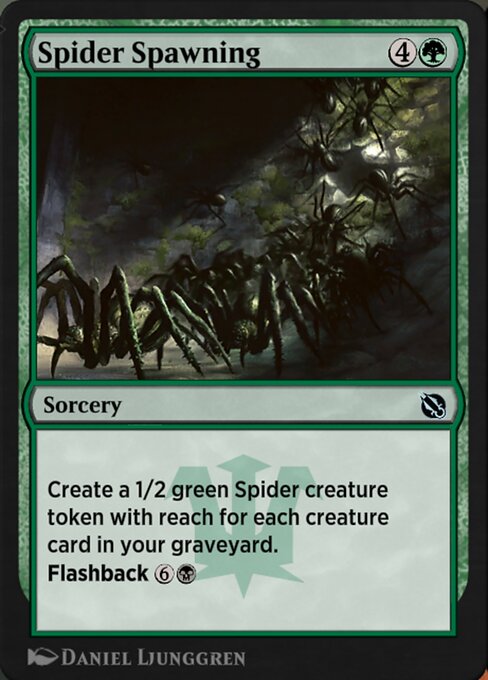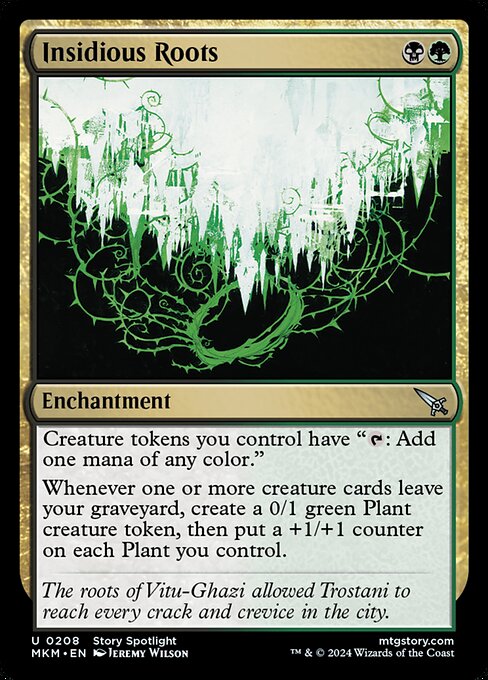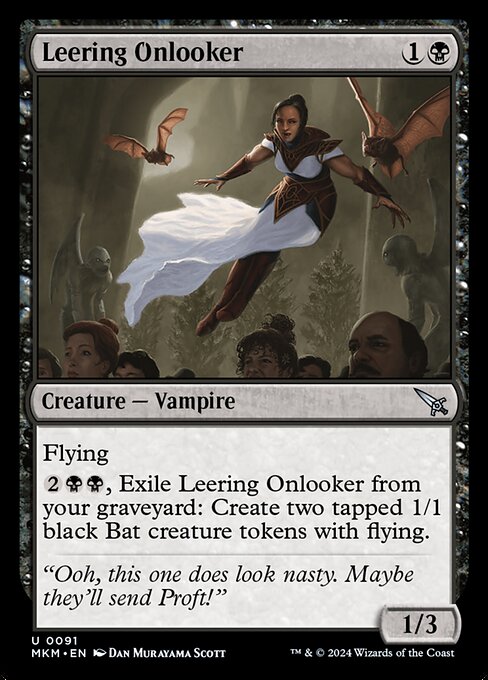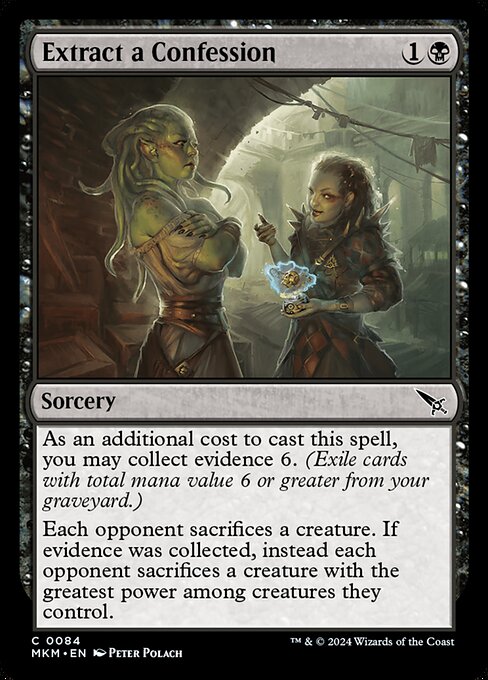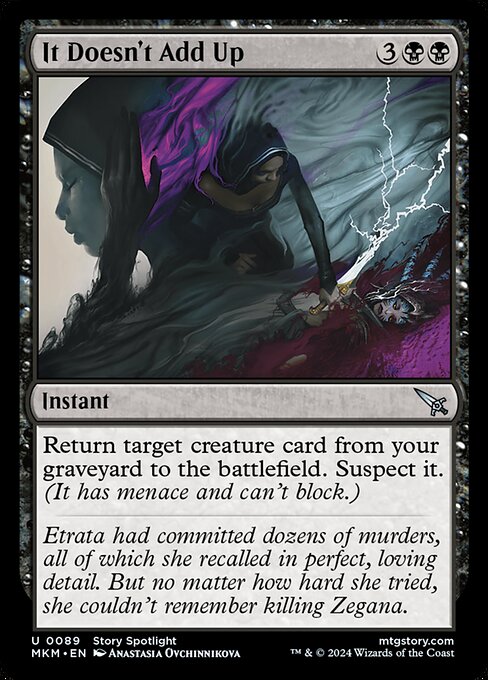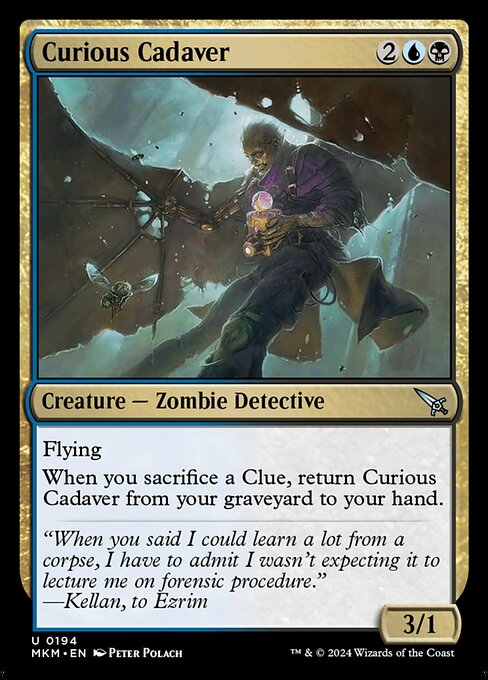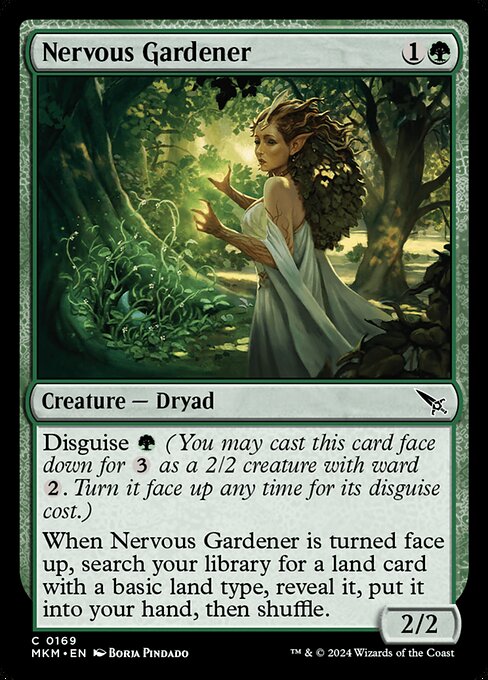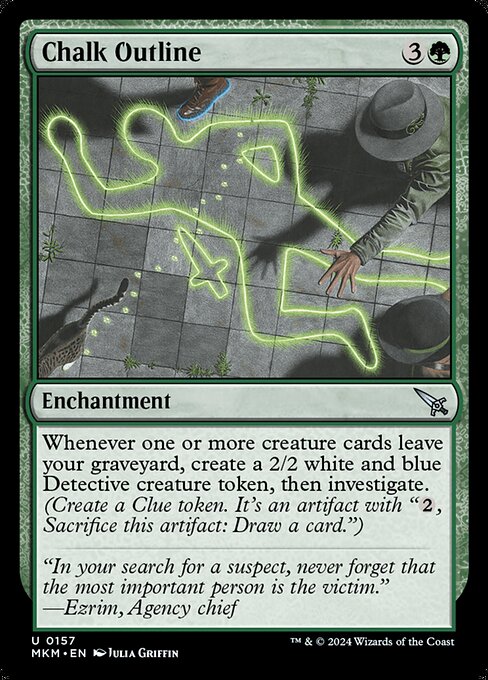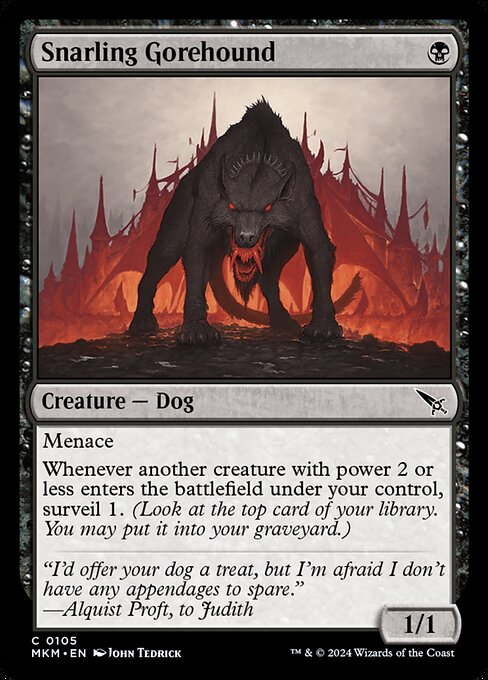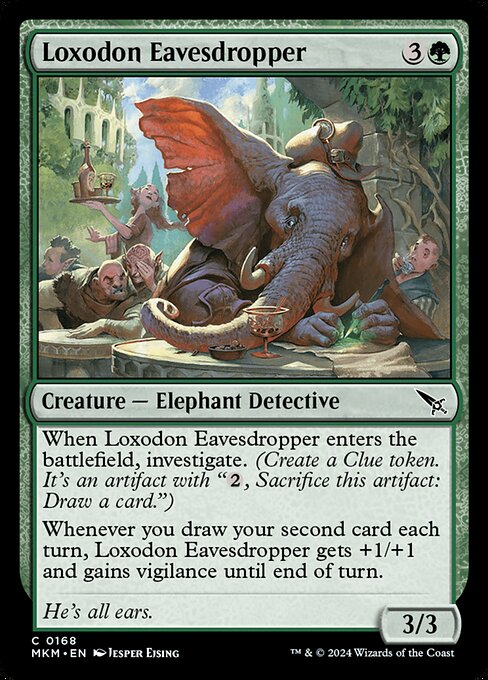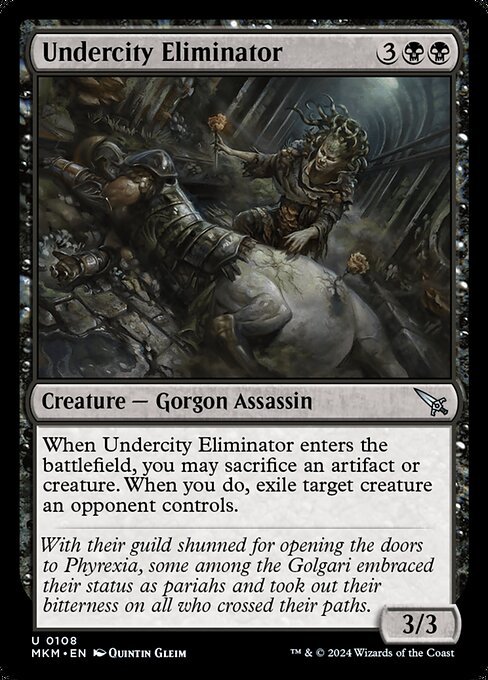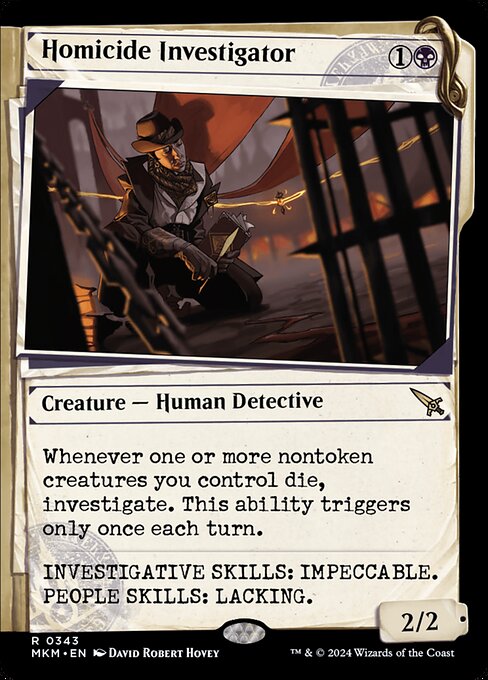Table of Contents
A new Limited format is almost upon us, and it is this lull period before the release of a new set when it is the best time to theorycraft for new decks, also known as cooking. Magic is weirdly similar to cooking, when you think about it. Netdecking Constructed is quick and easy but will rarely produce impressive results, but give a couple of tweaks to a deck you found online, adjust it to your local metagame and you got a stew going (Rest in Peace Carl Weathers).
Limited reminds me of raiding a fridge full of random ingredients and cobbling together something from them. You will most likely base it on something you cooked before, but necessity will often force you to add something new, make some changes you would not make, adjust and adapt. Then we have the developing of new recipes. This is what original deck building is. You are not limited in the ingredients you have access to – the only limits are palatability and your imagination.
Original Deck Building in Limited
The pinnacle of deckbuilding is designing a novel constructed deck that is competitive in its format. I always admired deck building artists who ignore the existing metagame decks and build something new. It requires creativity, courage and hard work, and any tiny success in deck building is built on a mountain of failures. Only very few decks can truly become tier 1 or even tier 2.
However, deckbuilding like this is not only the domain of constructed. Creative deckbuilding can be applied in Limited as well. The search for a coherent archetype that exists beyond the 10 color pairs the design team suggests us we should be playing is the Holy Grail of any limited grinder, and few people succeeded. Ryan Saxe successfully developed an aggro strategy based on an unwanted card in Amonkhet, Slither Blade.
The deck used unblockable 1 drop in combination with some burn, combat trick and tempo cards. Because your main threat was a 1 drop, the decks had few lands – 14-15, thus increasing the density of the threats you could deploy. Part of its power was, at least initially, not being predictable. Opponents must have gone from smirking on turn one seeing an “unplayable” creature hit the board into realising in terror a couple of turns later that this 1 drop is now a 4/5 and they can’t do much to stop it.
There have been several other notable decks in Limited based on someone theory crafting a novel strategy around the unwanted cards – Dovin's Acuity in Ravnica Allegiance, Spider Spawning in Innistrad. I had several niche build-arounds with cards few were interested in my favourite set, Ikoria. One revolved around cycling instant and sorcery spells to transform a fringe playable, Spelleater Wolverine into a formidable threat very rapidly and using the powerful combination of Forbidden Friendship and Of One Mind to fuel my later game, overwhelming the opponents. Incidentally, my card draw package also helped the Wolverine to get Double Strike.
Another Ikoria example was, what I called “inverse mutate”. Mutate was the central mechanic of the set, but the problem with it was putting multiple creatures on top of each other made you susceptible to removal spells. One removal spell took out 2-3 or even more creatures. Yes, you likely got some value from the mutate triggers, but that was frequently not enough to cover the loss.
My solution for that was playing early ramp spells, focusing on getting to 6 mana as soon as possible to cast a niche 6 drop – Wingfold Pteron – the only creature in the set that had Hexproof. From that moment you could happily mutate on top of it accruing a lot of value with a minimal risk of losing your value generator. On top of that, the creatures used to ramp were also good in fixing your mana, meaning you got access to best mutate creatures from the whole set.
How to Start Cooking?
All the examples I gave have one thing in common. It starts with a card. Slither Blade. Acuity. Pteron. They formed the key element in their decks and all else was dedicated to support them. Like the main element of a complex dish – everything else will be dedicated to making it shine, amplifying its flavours, playing to its strength and limiting its weaknesses. In every set you will find cards that can be conceptualised like this. It is a great exercise in thinking about limited to pick those cards out and try to think: how would I build around them in an unintuitive way. How can I weave in cards that are underutilised in the format to make my strategy possible? It is not really hard to build around using very powerful and popular cards – in such cases, the problem is getting those cards in draft as they are picked early.
Once you have your pet card, your main ingredient, you need to start finding good pairings that go with it. Figure out what will make them work and what will work also if you don’t draw your main plan. The Acuity deck was a great example of such thinking – most other cards in that deck were instants, so they could trigger the Acuity. But at the same time, a lot of them were both keeping you alive until you drew your Acuity or dug to find it faster. Or both. Since your deck was almost never planning on attacking opponent, all the cards should contribute to the defensive plan. The key is consequently sticking to this plan and understanding what are the downsides of it.
And here we come to the second important aspect of your cooking. What can go wrong. When developing a dish recipe you need to know of the technical difficulties involved. You also need to understand your ingredients and know if some pairings will not result in a bad result. When making a rich dish, you may want to introduce some sourness to break though the nauseating blandness. If the dish is too creamy, you might want to introduce some elements with texture to make the structure of the dish more interesting to the person eating it. It is the same with a deck. You need to identify the dangers and proactively works against it.
To come back to the Acuity example, the big risk the deck was facing was the inevitability of opponent’s threats. Since your plan was to make them draw their entire library, you needed to be ready to deal with any type of threats they might have in their deck. When I was learning to play with this deck I quickly realised that one Disenchant type effect was a must in it – since your opponents may have Artifacts or Enchantments that you just simply must be able to deal with. Counterspells were also a good universal answer that fit your plan pretty well. With that knowledge, my Acuity builds instantly became more consistent.
Once you understand those simple strategies, you are ready to cook. So let’s try to cook up some Murders at Karlov Manor build-around using the approaches I mentioned above – keep in mind that all of those were developed based on underused cards. We don’t have the luxury of knowing what will be underdrafted in MKM, so keep that in mind if you were brave enough to try any of them in real draft. Theory crafting has a very high rate of failure, but despite that, as I will hopefully be able to convince you later, it is still an exercise worth doing.
Plant-based Cuisine
First card I want to try to build around is:
This Golgari Enchantment has “build-around” written all over it. Every time a creature leaves your graveyard, you get a 0/1 Plant token and then you put +1/+1 counters on each Plant you control. This card only works when a creature cards leave your graveyard, which is not something that will frequently happen in a game naturally. This means you will need to force the issue. And this requires to think about how to achieve it in a coherent fashion.
Firstly, your Insidious Roots deck will have to be predominantly creatures. This is something important to think about – you can load your deck with cards that play well with Insidious Roots, but if you don’t have any creatures in the graveyard – the card is useless anyway.
Secondly: how do creature cards leave the graveyard? There are basically four ways this could happen. Creature card can go back to your hand, straight to the battlefield, or your back to your library. That last option is not available in MKM. Alternatively, it can get exiled from the game – a one way solution, so keep in mind you will not be able to build an engine based on that in MKM draft. But the set would not have a card like Insidious Roots if it didn’t have ways to trigger it.
Exiling Cards From Your Graveyard
Firstly, exiling. There are several creature cards that can exile themselves from the graveyard. Two that caught my eye are Rubblebelt Maverick and Leering Onlooker. The first one is an early drop that first of all can fuel your graveyard. On ETB this card surveils 2. This will be good in two ways. Sometimes you will find a card you want to go to the graveyard in your top two cards of the library and this will give you a tool to put them there. A 1/1 is something that you can use to trade off with a token or chump block to save life – and later in the game, you can pay 2 mana to exile Maverick from your graveyard and put a +1/+1 counter on something. Hopefully while you have your Roots on board to start generating the Plant tokens.
Leering Onlooker is a very well defensively statted 1/3 flying creature for 2 mana. This can block the MKM morph creatures all day. Once it dies, you can pay 4 mana to exile it from the graveyard and get 2 1/1 Flying Bats for the effort. The big upside from that if you have Roots is that those bats become mama dorks you can tap for any color of mana – feeding your hunger for more mana.
Apart from those creatures, there is a whole mechanic dedicated to exiling cards from your graveyard. Collect Evidence is an extra kicker-esque cost on a card, that gives you a discount or a bonus mode on a card if you exile cards with a total mana value equal or greater to the one specified on the card. Some Collect Evidence uses are one shot, like Extract a Confession – an edict effect that can get upgraded to “kill the biggest creature” if you exile 6 mana worth of cards from the graveyard. This card can help you in the early game by killing a morph, reducing early pressure and later can deal with something big while generating value for you, if you exile a creature.
Other Collect Evidence cards are reusable. Hedge Whisperer is a 1 mana 0/3 – good early blocker in a morph set. But later in the game it can tap and Collect Evidence to turn your land into a 5/5 Plant Boar (don’t ask me how it works). The type here is relevant. Remember that Insidious Roots puts counters on each Plant you control so if your land is a Plant, it will get a counter too. Hedge Whisperer combines creating a large threat/blocker and getting access to reusable creature exile mechanisms while creatures in your graveyard supplies last.
Return Cards Back to Hand or Battlefield
But exiling is not a sustainable way of getting creatures out from your graveyard. You will eventually run out of material to exile. For decks like this to work you need to find a more reproducible way of doing things. Build an engine that will let you do “the thing” reliably throughout the game and accrue value. This means it is time to look at ways to return the creatures back to hand or battlefield.
There are several ways of returning cards from your graveyard. In my version I will focus on three cards in particular. Macabre Reconstruction is an easy one to spot. 4 mana to return 2 creature cards from your graveyard back to your hand – you can rebuy anything you might need to enforce your plan and trigger the Roots as you do it. If any creature entered your graveyard this turn, you even get a discount of 2 mana – quite important in a deck that will be mana hungry. Keep in mind that while it returns two creatures to your hand, you only get one Roots trigger out of it.
It Doesn't Add Up is a reanimate spell. For 5 mana you get something from your graveyard back to the battlefield and suspect it. The last part is something to think about when you put this card in your deck – suspected creatures can’t block, so you need to make sure you can afford to start playing more aggressively once you play it. And it does need some good targets to reanimate that easily end up in your graveyard. If you manage to fulfil those criteria, you have another spell that can trigger your Roots while accruing some value.
Last, but not least, we have Curious Cadaver. A creature that can return itself from the graveyard whenever you crack a clue. This is a powerful effect for what you are planning to do – you potentially have a reproducible source of triggering your Roots. But it comes with a set of its own problems. First, you need to be able to reliably cast the Cadaver, so you will need to make sure you can get the blue mana reliably. Secondly, you need to be able to generate some Clues in order to use the ability. If you manage to solve those two issues, Cadaver can be a premier enabler for your strategy.
Mana Fixing
Let’s try to figure out the mana issues first. This seems to be an easy problem to tackle in this set when you are playing green. There is a large selection of cards that provide fixing and some of them are doubling up on other duties within your game plan.
Nervous Gardener looks like a really good card in general. A cheap to flip morph creature, that provides some card draw with selection and still for the first 4 turns can trade with any disguised creature opponent puts on board. This is a very simple way to get an Island for the Cadaver splash or and other basic if you decide to play some other cards in your Roots deck. It doesn’t contribute to your plan, but just the rate on the card seems to be good enough to make some space for it in this type of a deck in order to increase its consistency while retaining a high creature count.
Topiary Panther on the other hand looks like a windmill slam for the Roots decks. Puts itself into the graveyard for mana fixing. Is large enough to want to rebuy it later in the game. And on to of it all – it is a Plant so it will grow with each Roots activation which is a cherry on top. 6 MV cost makes it also a potent source for collecting evidence if you are looking for a more Evidence Collecting version of the deck than the one I suggest here. Panther is the reason I suggested to play It Doesn't Add Up in my version of the deck.
Escape Tunnel is just a good card. A strictly better Evolving Wilds is something you might want to play, but it doesn’t help you neither activating Roots nor Collecting Evidence. The more large Disguised creatures you have, the more useful the unblockability will be in the later game.
And lastly, not to forget about it, Insidious Roots is fixing on its own. Each creature token can add mana of any color while you control Roots. There doesn’t seem to be enough support in MKM to make a creature token based ramp deck (thrust me, I tried), but getting some extra mana and in any color is a useful thing to have in range of what the card does. And as I already mentioned, apart from the Plant tokens, you may have access to some other creature Tokens, like the 1/1 Bats or Thopters, perhaps you can play A Killer Among Us too. Especially with any version of engine using Cadaver, you will need a lot of mana so extra mana dorks might be useful.
Deck Resilience
With fixing out of the way, let’s look at the ability to add resilience to the deck and ability to generate Clues for the Cadaver engine. First – resilience. And there is one card that potentially increases that and plays well with the general plan of the deck and Cadaver in particular.
Chalk Outline does a very similar thing to the Insidious Roots. Triggers on creature leaving your graveyard, but instead of making a Plant and growing all your plants, it makes a 2/2 Detective and a Clue. This can have a powerful interaction with the Cadaver – you sac a Clue to return it to your hand, another Clue is made so next time Cadaver will be in your graveyard you instantly get a way to return it to your hand, making another Detective and another Clue – you see where it is going.
Importantly, presence of Chalk Outline in the format means you get two times of the build around effect you are aiming for, making it more reliable to come together in a draft. Problem with cards like this – you don’t get anything upfront for a 4 mana card. Few formats in recent years would allow anything with that rate to be viable so I am cautious about making this card a centrepiece of your deck and relegated it onto a support cast. But do keep in mind that the interaction with Cadaver is strong.
Completing the Deck
With the core of the deck in place, time to look for some cards that could complete it. I decided to fill it in with some cards that can do both offence and defence and some creatures that will unlock card selection. This way you increase the odds of seeing your build-around cards and at the same time, you are prepared to turn the corner the moment you start taking over the game. Prolonging games for too long is a dangerous game with the modern card design in place.
Snarling Gorehound is an interesting 1-drop. Having Menace will ensure you will be able to get a couple of hits with it early in the game. But surveilling every time a creature with power 2 or less ETBs is a neat ability to have here. Most of your creatures fulfil this criterion, but more importantly, so are all your tokens generated from Roots and Chalk Outline. Surveil lets you also do some card selection and graveyard filling. Late in the game you will be probably quite happy to put a Cadaver, Maverick or Leering Onlooker straight into your graveyard.
Loxodon Eavesdropper looks like a very good on rate creature. Will force your opponent either to unflip their morphs or to stop attacking you with them. And once you start generating value with the Roots/Outline/Cadaver interaction, you will have a vigilant attacker that can start chipping in for damage. Or trade and get ready to be re-bought with Macabre Reconstruction for example. 4 MV is also a neat number for Collecting Evidence somewhere down the line.
One thing that is missing from the set is a good reusable sacrifice outlet for the Cadaver. Agency Coroner is fine and great defensively but the cost to use it is pretty high. Instead of that I opted to play an Undercity Eliminator. Ability to shoot your Cadaver (or Clue/1-drop/Plant, if situation is right) to exile opponents biggest threat is great. And after trading it you can rebuy it again. If you played LCI you may remember how taxing was it when opponent played Another Chance to get back their Chupacabra Echo.
Undercover Crocodelf at first looked to me like a meme card, but the longer I think about it, the more I like it. It will never be the best common of the set, but I see it as a solid addition to any deck in the higher mana slot. That is I smuggled in one here. Ability to generate Clues can be your reserve option with the Cadavers.
Last two slots in my deck are taken up by Homicide Investigator – the only rare I put on the list. it works great with Cadaver, generating a Clue as it dies to instantly be able to rebuy it. Generally the creature looks solid. But realistically, this deck can fit any bomb, including some of the most atrocious ones which are off color – with roots you should be able to eventually cast them using the Plants. But there are plenty Golgari cards that fit the deck very well. Izoni, Center of the Web would be great, but given the amount of ramp this deck has, even something like Outrageous Robbery can be a solid finisher.
Tunnel Tipster is not essential to the deck but given its mana hunger, I though it would make a fine3 addition, and with a couple of disguised creatures can eventually grow into a 3/3 blocker, which is not nothing.
Final Deck and Thoughts
So after considering pros, cons, dangers and possibilities, I ended up with this version:

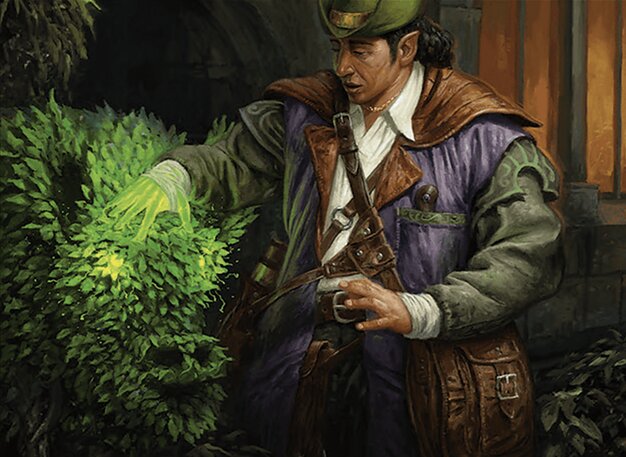
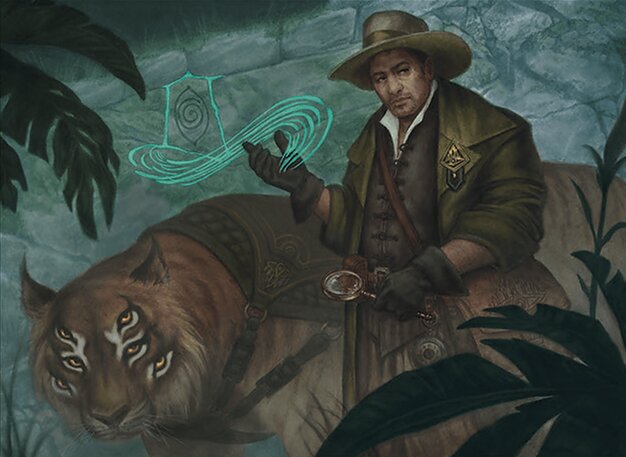
Creatures (17)
Instants (1)
40 Cards
$17.02
Feel free to click the link to my list on sealeddeck.tech and adjust it your way, or build something completely different instead. Because that is the point of it. To play, explore. Do I think Insidious Roots deck will be the strongest thing in the format? No. I don’t even know if it will be reliable enough to be playable. But just by thinking about it for an hour or so, I have a clear vision of what it could look like and if I am in the position to try it, I will not have to improvise during the draft, I will have some ideas on how to build it and draft it ready. By exploring the set and by exploring how to deck-build I will also be more prepared for any other plan in any other set.
That is why I think deck-building exercises are so important if you want to become a better limited player. It lets you jump to the next level – from someone who knows which cards are good to a person who knows how to squeeze more power out from each card they play. A skill that will increase your win rate and, if I am any indication, increase your enjoyment of the game itself.
If you found this article interesting – I do some more MKM cooking in my latest seminar with 2 more decks I speculate on:
Premium >
Enjoy our content? Wish to support our work? Join our Premium community, get access to exclusive content, remove all advertisements, and more!
- No ads: Browse the entire website ad-free, both display and video.
- Exclusive Content: Instant access to all exclusive articles only for Premium members, at your fingertips.
- Support: All your contributions get directly reinvested into the website to increase your viewing experience!
- Discord: Join our Discord server, claim your Premium role and gain access to exclusive channels where you can learn in real time!
- Special offer: For a limited time, use coupon code L95WR9JOWV to get 50% off the Annual plan!




























